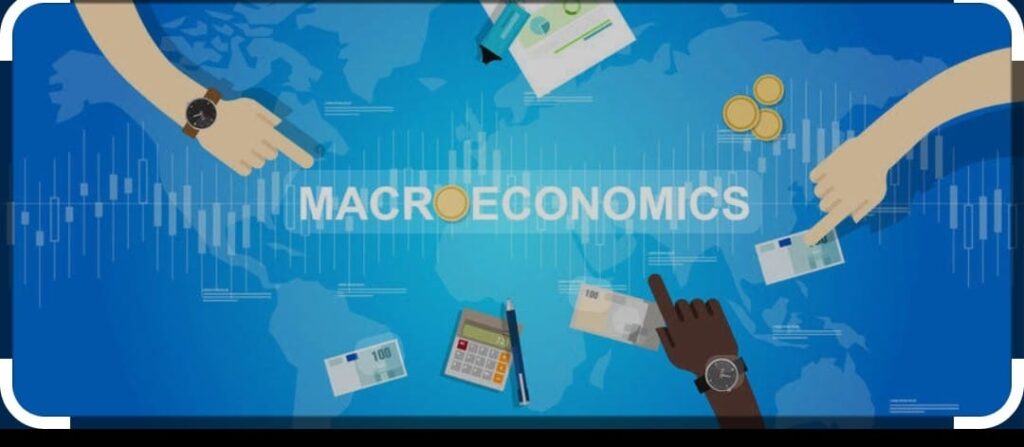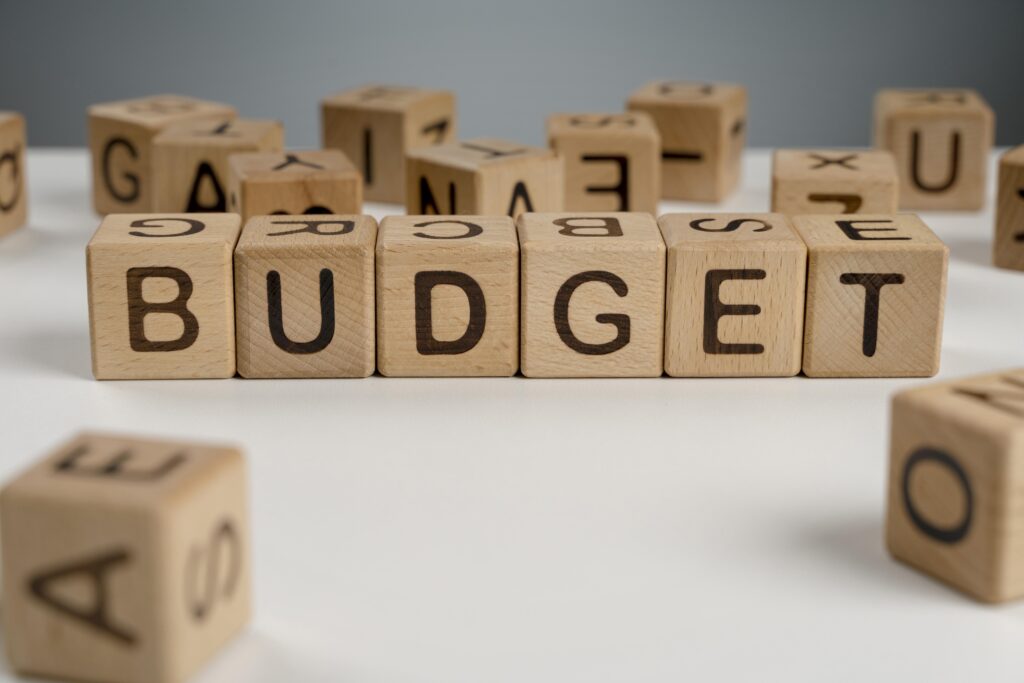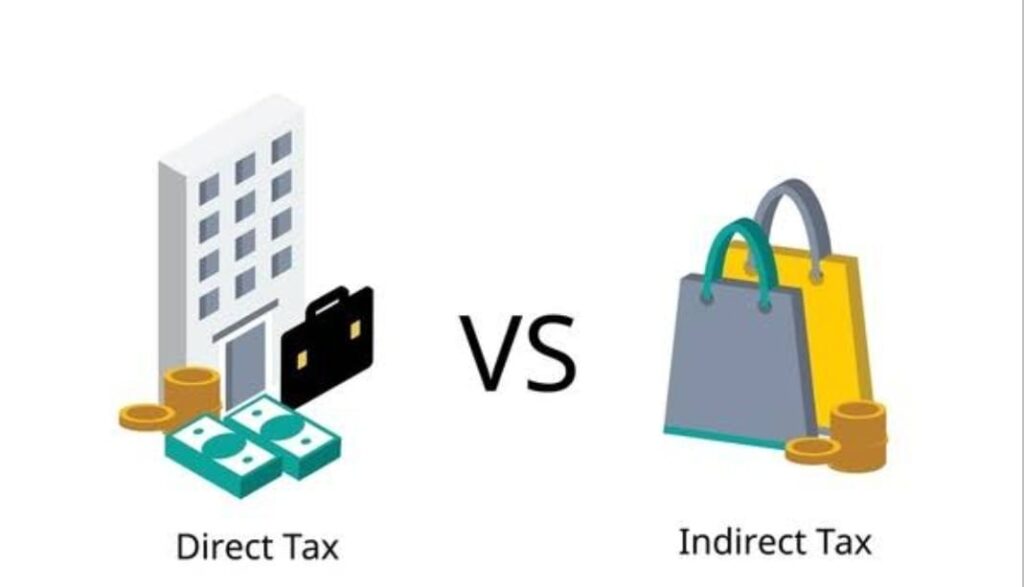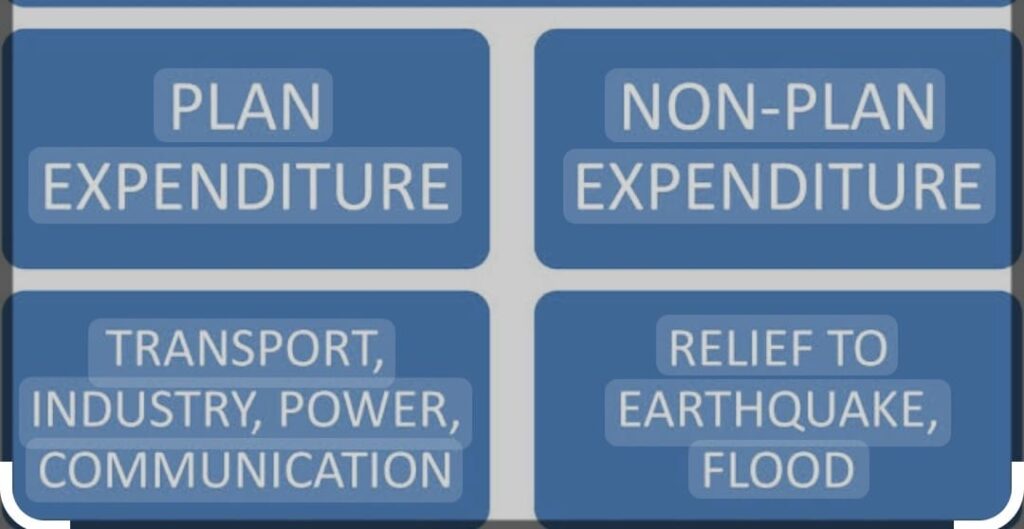Macro Economic part 2

Government Budget 
1. A government budget in Macro Economics Part 2 :
Budget in Macro Economics is an annual financial statement showing item wise estimates of expected revenue and anticipated expenditure during a fiscal year.
2. Budget has two parts in Macro Economics Part 2:
(a) Receipts;
(b) Expenditure.
3. Objectives of budget in Macro Economics Part 2
(a) Reallocation of resources:
Private enterprises always allocate resources in those areas of production where profits are high. such production of alcohol/tobacco .
In budgetary policy of Macro Economics the government of a country directs the allocation of resources in a manner such that there is a balance between the goals of profit maximization and social welfare.
Production of goods which are injurious to health (like cigarettes and whisky) is discouraged through heavy taxation.
Government has to reallocate resources in accordance to social and economic consideration in Macro Economics.
(b) Redistributive action of budget :
Budget of a government in Macro Economics shows its comprehensive exercise on the taxation and subsidies.
The government uses fiscal instruments of taxation and subsidies with a view of improving the distribution of income and wealth in the economy.
Production of “socially useful goods” (like electricity, ‘Khadi’) is encouraged through subsidies.
A government reduces the inequality in the distribution of income and wealth by imposing taxes on the rich and giving subsidies to the poor, or spending more on welfare of the poor.
It reduces income of the rich and raises the living standard of the poor, thus, leads to equitable distribution of income.
Expenditure on anti poverty and employment programmes in Macro Economics will be increased to bring more people above poverty line.
Public distribution is made so that only the poor could get foodgrains at low prices.
Equal distribution of income and wealth represent social justice which is the principal objective of Budget of India.
(c) Stability in market goods and services.
Stability in the price of essential commodities in Macro Economics as market forces (or the forces of supply and demand) create trade cycles/ business cycles.
There are different phases of recession, depression, recovery and boom in the economy. The government of a country has to save the economy from business cycles.
Budget is used as an important tool to solve the situations of deflation and inflation. By doing it the government tries to achieve the state of economic stability.
Economic stability leads to more investment and increases the rate of growth and development.
Control over public enterprises:
A government in Macro Economics undertakes commercial activities that are of the nature of natural monopolies, established and managed for social welfare of the public.
A natural monopoly is a situation where there are economies of scale over a large range of output industries which are potential natural monopolies are railways etc
4. Importance of a budget in Macro Economics Part2
(a) Now a days every country aims at its economic growth to improve living standard of its people.Besides, there are many problems such as poverty, unemployment, inequalities in incomes and wealth etc.
Government has to fight hard to solve these problems through budgetary measures.
(b) The budget in the Macro Economics shows the fiscal policy. Item wise estimates of expenditure shows how much and what items, the government is going to spend.
Similarly, item wise details of government receipts indicate the sources from where the government is going to get money to finance the expenditure.
In this way budget in macro Economics is the most important instrument in hands of governments to achieve their objectives and there lies the importance of the government budget.
Note: Fiscal year is the year in which country’s budgets are prepared. Its duration is from 1st April to 31st March.
Types of budget in Macro Economics Part2:
It may be of two types:
(a) Balanced Budget
(b) Unbalanced Budget
(a) Balanced Budget:
If the government revenue is just equal to the government expenditure made by the general government, then it is known as balanced budget in Macro Economics .
(b) Unbalanced Budget:
If the government expenditure is either more or less than a government receipts, the budget is known as Unbalanced budget.
It may be of two types:
(i) Surplus budget (ii) Deficit budget
(i) Surplus Budget:
If the revenue received by the government is more in comparison to expenditure, it is known as surplus budget.
In other words, surplus budget implies a situation where government income is in excess of government expenditure.
(ii) Deficit Budget:
If the expenditure made by the general government is more than the revenue received, then it is known as deficit budget in Micro Economics. In other words, in deficit budget, government expenditure is in excess of government income.
Components Of Government Budget in Macro Economics Part 2 :
(a) Revenue Budget and (b) Capital Budget.
(a) Revenue Budget: Revenue Budget contains both types of the revenue receipts of the government, i.e., Tax revenue and Non tax revenue ; and the Revenue expenditure.
(i) Revenue Receipts: These are the receipts that neither create any liability nor reduction in assets of the government. It includes tax revenues like income tax, corporation tax and non-tax revenue like fines and penalties, special assessment, escheat etc.
(ii) Revenue Expenditure: An expenditure that neither creates any assets nor cause reduction of liability is called revenue expenditure.
(b) Capital Budget: Capital budget contains capital receipts and capital expenditure of the government.
(i) Capital Receipts: Government receipts that either creates liabilities (of payment of loan) or reduce assets (on disinvestment) are called capital receipts. Capital receipts include items, which are non-repetitive and non-routine in nature.
(ii) Capital Expenditure: This kind of expenditure of the government either creates physical or financial assets or reduction of its liability. Acquisition of assets like land, machinery, equipment, its loans and advances to state governments etc. are its examples.
2. Budget receipts (government receipt): Budget receipt refers to the estimated receipts of the government from various sources during a fiscal year. It shows the sources from where the government intends to get money to finance the expenditure. Budget receipts are of two types:
(a) Revenue receipts Government receipts, which Neither create any liabilities for the government; and Nor cause any reduction in assets of the government, are called revenue receipts.
In revenue receipts both the conditions should be satisfied Revenue receipts include items which are Repetitive and routine in nature.
(ii) Revenue receipts are further classified into:
• Tax Revenue: Tax revenue is receipts from all kinds of taxes such as income tax, corporate tax, excise duty etc. A tax is a legally compulsory payment imposed by the government on income and profit of persons and companies without reference to any benefit. Taxes are of two types: Direct taxes and Indirect taxes.
• Non-Tax Revenue: Non-tax revenue is government revenue from all sources excluding taxes. These are incomes, which the government gets by way of sale of goods and services rendered by different government departments.
Main Components of Non-Tax Revenue: Commercial Revenue (Profit and interest):It is the revenue received by the government by selling the goods and services produced by the government agencies. For example, profit of public sector undertakings like Railways, BHEL, LIC etc.
Government gives loan to State Government, union territories, private enterprises and to general public and earns interest receipts from these loans. It also includes interest and dividends on investments made by the government.
Administrative Revenue: The revenue that arises on account of the administrative function of the government. This includes:
Fee: It is the payment made to the government for the services that it renders to the citizens. Such services are generally in public interest and fees are paid by those, who receive such services. For example, passport fees, court fees, school fees in government schools.
License Fee: License fee is a payment to grant a permission by a government authority. For example, registration fee for an automobile.
Fines and penalties for an infringement of a law, i.e., they are imposed on law breakers.
Special Assessment: When government does developmental activities by which value of nearby property appreciates, which leads to increase in wealth. So, it is the payment made by owners of those properties whose value has appreciated.
For example, if value of a property near a metro station has increased, then a part of developmental expenditure made by government is recovered from owners of such property. This is the value of special assessment.
Forfeitures are in the form of penalties imposed by courts that a person needs to pay in the court of law for failing to comply with court orders.
Escheat is the claim of the government on the property of a person who dies without having any legal heir or without leaving a will.
External grants: Government receives financial help in the form of grants, gifts from foreign governments and international organisations (IMF, World Bank). Such grants and gifts are received during national crisis such as earthquakes, flood, war etc.
(b) Capital receipts:
(i) Meaning: Government receipts, that either creates liabilities (of payment of loan) or reduce assets (on disinvestment) are called capital receipts.In capital receipts any one of the conditions must be satisfied. Capital receipts include items which are non-repetitive and non-routine in nature,
(ii) Components: Borrowing (Domestic and External): Borrowings are made to meet the financial requirement of the country. A government may borrow money :i) Domestically: General Public (By issuing government bonds in the open market).
Reserve Bank of India .ii) Externally: Rest of the world (foreign government and international institutions)
Recovery of Loans and Advances: It includes recovery of loans granted by the central government to state and union territory governments.
It is a capital receipt because it reduces financial assets of the government.
For example, The Government of India may give Rs. 100 crore as a loan to The Government of UP. It is the value of asset is Rs. 100 crore. When The Government of UP repaid Rs. 10 crore, the value of The Government of India assets reduces to Rs. 90 crore as recovery of loan reduces the value of assets, it is termed as a capital receipts.
Disinvestment: A government raises funds from disinvestment also. Disinvestment means selling whole or a part of the shares (i.e., equity) of selected public sector enterprises held by government due to which government assets are reduced.
Types Of Taxes macro economics part2
1. Direct Taxes: When (a) liability to pay a tax (Impact of Tax), and (b) the burden of that tax (Incidence of tax), falls on the same person, it is termed as direct tax. A direct tax is paid directly by the same person on whom it has been levied.
It means a tax in which impact and incidence of tax falls on the same persons, then it is termed as direct tax. In other words, burden of a direct tax is borne by the person on whom it is imposed which means the burden cannot be shifted to others.
Alternatively, the person from whom the tax is collected is also the person who bears the ultimate burden of the tax. Income tax and corporate (profit) tax are most appropriate examples of direct tax.
2. Indirect Tax: When (a) liability to pay a tax (Impact of tax) is on one person (b) the burden of that tax (Incidence of tax), falls on the other person, it is termed as indirect tax.
It means a tax in which impact and incidence of tax lie on two different persons, then it is termed as indirect tax. In other words, indirect taxes are the taxes of whose burden can be shifted to others. In case of an indirect tax, person first pays the tax but he is able to transfer the burden of the tax to others.
For instance, sales tax is an indirect tax because indirect tax is collected by government from the seller of the commodity who in turn realizes the tax amount from the buyer by including it in the price of the commodity.
Other examples of indirect taxes are excise duty, custom duty, entertainment tax, service tax etc.
Progressive Tax: A tax the rate of which increases with the increase in income and decreases with the fall in income is called a progressive tax. The higher is the income of a taxpayer, the higher is proportionate tax he pays.
For example, in India income tax is considered a progressive tax because its rate goes on increasing with the increase in annual income.
For example, In (2015-2016) there is no tax up to annual income of Rs. 2,00,000 but the .rate of income tax increases with the increase in incomes.
It is 10% on incomes between Rs. 2,00,000 and Rs. 5,00,000; 20% on incomes between Rs. 5,00,000 and Rs.10,00,000 and 30% on incomes above Rs. 10,00,00 0.
Proportional Taxation: A tax is called proportional when the rate of taxation remains constant as the income of the taxpayer increases.
Example: If tax rate is 10% and the annual income of a person is Rs. 5,00,000, then he will have to pay Rs. 50,000 per year as tax. If income rises to Rs. 10,00,000 per annum, then the tax liability will rise to Rs. 100,000 per year. In this case, burden of tax is more on the poor section as compared to rich section.
5. Regressive Tax: In a regressive tax system, the rate of tax falls as the tax base increases as (a) the amount of tax to be paid increases, and (b) the rate at which tax is to be paid falls.
Budget Expenditure & Its Related Concepts in macro economics part 2
1. Meaning: Budget expenditure is the estimated expenditure of the government on its “development and non-development programmes or “plan and non-plan programmes during the fiscal year.
2. Types:
(a) Plan and non-plan expenditure
(b) Revenue and capital expenditure
(c) Developmental and non-developmental Expenditure
(a) Plan and non-plan expenditure:
(i) Plan Expenditure: Plan expenditure are those expenditure which is incurred by the government to fulfill its planned development programmes.
This includes both consumption and investment expenditure by the government or NITI Aayog of a country.
Expenditure on agriculture, industry, public utilities, health and education etc. are examples of plan expenditure.
(ii) Non-Plan Expenditure: This refers to all such government expenditures which are beyond the scope of its planned development programmes.
For examples basic function of protecting the lives and properties of the people. For this government has to spend on police, judiciary, military etc.
In short, expenditure other than expenditure related to current Five-year plan is treated as non-plan expenditure.
(b) Revenue and capital expenditure:
(i) Revenue Expenditure: An expenditure that (a) Neither creates any assets (b) nor causes any reduction of liability .
In revenue expenditure both the conditions should be satisfied Examples of revenue expenditure are: salaries of government employees, interest : payment on loans taken by the government, pensions etc.
Capital Expenditure: An expenditure that either create assets for the government [equity or shares) of the domestic, or multinational corporations purchased by the government), or cause reduction in liabilities of the government, [repayment of loans reduces liability of the government).
In capital expenditure any one of the above conditions must be satisfied. Therefore it is the expenditure that leads to creation of assets and reduction in liabilities. Such expenditure is incurred on long period development.
The only difference between capital expenditure and revenue expenditure is that the capital expenditure is incurred on creation or acquisition of assets, whereas, the revenue expenditure is incurred on rendering services.
For example: Expenditure on construction of a hospital building is capital expenditure, but expenditure on medicines, salaries of doctors etc. for rendering services by the hospital is revenue expenditure.
(c) Developmental and non-developmental Expenditure:
(i) Developmental Expenditure: Developmental expenditure is the expenditure which are directly related to economic and social development of the country.
This includes expenditure on education, health, agriculture, transport, roads, rural development etc. This also includes loans given by the government to enterprises like Sahara for the purpose of development.
(ii) Non-developmental Expenditure: It is the expenditure on the essential general services of the government. This includes expenditure on defence, payment of old age pension, collection of taxes, interest on loans, subsidies etc.
Budget deficit in macro economics part 2
(a) Meaning: Budgetary deficit is referred as the excess of total budgeted expenditure (both revenue expenditure and capital expenditure) over total budgetary receipts (both revenue receipt and capital receipt).
(ii) In other words, when sum of revenue receipts and capital receipts fall short of the sum of revenue expenditure and capital expenditure, budgetary deficit is said to occur. Symbolically,
Budgetary Deficit = Total Expenditure – Total Receipts
(b) Types:
(i) Revenue deficit, (ii) Fiscal deficit and (iii) Primary deficit
Revenue deficit in macro economics part 2: Revenue deficit is the excess of revenue expenditure of the government over its revenue receipts.
Revenue Deficit = Total Revenue Expenditure – Total Revenue Receipts
(ii) The government of India budget for the year 2012-2013, total expenditure is Rs. 12,42,263 crore against total revenue receipts of Rs. 8,78,804 crore. As a result there is revenue deficit of Rs. 3,63,459 (12,42,263-8,78,804) crore, which is 3.6% of GDP.
(b) Implications of revenue deficit:
(i) Revenue deficit indicates dis-savings on government account because the government has to make up uncovered gap.
(ii) Revenue deficit implies that the government has to cover this uncovered gap by drawing upon capital receipts either through borrowing or through sale of its assets.